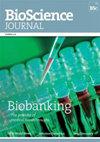Rhizobia inoculation increases pea grain yield: an overview and challenges
IF 0.6
4区 农林科学
Q3 AGRICULTURE, MULTIDISCIPLINARY
引用次数: 0
Abstract
The aim of this study was to evaluate the contribution of inoculation with microorganisms, mainly rhizobia, on pea (Pisum sativum) production using a systematic literature review approach and a comparative analysis of grain yield to provide information to fill gaps in nontraditional regions of cultivation for this legume. A systematic search strategy was implemented, targeting papers published in scientific journals accessible through the Web of Science® (WoS) database spanning from January 1990 to April 2022. The search terms "Pisum sativum," "inoculation," and "strain" were used. The differences between the pea grain yields from plants inoculated with nitrogen-fixing microorganisms and those from noninoculated plants (control) were analyzed using thirteen field-scale studies. Overall, pea inoculation/coinoculation promoted a greater grain yield (3118 ±210 kg ha-1) than noninoculation (2338± 127 kg ha-1), showing the importance of biological nitrogen fixation for legume crop production. In the pursuit of reducing pea production costs, emphasis has been placed on inoculation, highlighting the importance of comprehending the symbiotic relationship between peas and Rhizobium. Furthermore, this research aimed to explore the interaction between Rhizobium and selected microorganisms known to enhance plant growth to identify optimal combinations to boost pea productivity.接种根瘤菌可提高豌豆产量:概述与挑战
本研究的目的是通过系统的文献综述方法和谷物产量比较分析,评估微生物(主要是根瘤菌)接种对豌豆(Pisum sativum)产量的贡献,以提供信息填补该豆科植物非传统种植地区的空白。我们采用了系统的搜索策略,目标是 1990 年 1 月至 2022 年 4 月期间可通过 Web of Science® (WoS) 数据库访问的科学期刊上发表的论文。搜索关键词为 "Pisum sativum"、"接种 "和 "菌株"。利用 13 项田间规模的研究分析了接种固氮微生物的植株与未接种植株(对照)的豌豆籽粒产量之间的差异。总体而言,豌豆接种/联合接种比不接种(2338± 127 kg ha-1)促进了更高的谷物产量(3118±210 kg ha-1),显示了生物固氮对豆科作物生产的重要性。为了降低豌豆的生产成本,重点放在了接种上,这凸显了理解豌豆与根瘤菌之间共生关系的重要性。此外,这项研究旨在探索根瘤菌与已知能促进植物生长的特定微生物之间的相互作用,以确定提高豌豆产量的最佳组合。
本文章由计算机程序翻译,如有差异,请以英文原文为准。
求助全文
约1分钟内获得全文
求助全文
来源期刊

Bioscience Journal
Agricultural and Biological Sciences-General Agricultural and Biological Sciences
CiteScore
1.00
自引率
0.00%
发文量
90
审稿时长
48 weeks
期刊介绍:
The Bioscience Journal is an interdisciplinary electronic journal that publishes scientific articles in the areas of Agricultural Sciences, Biological Sciences and Health Sciences. Its mission is to disseminate new knowledge while contributing to the development of science in the country and in the world. The journal is published in a continuous flow, in English. The opinions and concepts expressed in the published articles are the sole responsibility of their authors.
文献相关原料
| 公司名称 | 产品信息 | 采购帮参考价格 |
|---|
 求助内容:
求助内容: 应助结果提醒方式:
应助结果提醒方式:


